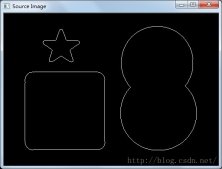前言
单链表的操作是面试中经常会遇到的问题,今天总结一下反转的几种方案:
1 ,两两对换
2, 放入数组,倒置数组
3, 递归实现
代码如下:
|
1
2
3
4
5
6
7
8
9
10
11
12
13
14
15
16
17
18
19
20
21
22
23
24
25
26
27
28
29
30
31
32
33
34
35
36
37
38
39
40
41
42
43
44
45
46
47
48
49
50
51
52
53
54
55
56
57
58
59
60
61
62
63
64
65
66
67
68
69
70
71
72
73
74
75
76
77
78
79
80
81
82
83
84
85
86
87
88
89
90
91
92
93
94
95
96
97
98
99
100
101
102
103
104
105
106
107
108
109
110
111
112
113
114
115
116
117
118
119
120
121
|
#include<stdio.h>#include<malloc.h>typedef struct Node{ int data; struct Node *pnext;} Node,*pnode;pnode CreateNode(){ pnode phead=(pnode)malloc(sizeof(Node)); if(phead==NULL) { printf("fail to allocate memory"); return -1; } phead->pnext=NULL; int n; pnode ph=phead; for(int i=0; i<5; i++) { pnode p=(pnode)malloc(sizeof(Node)); if(p==NULL) { printf("fail to allocate memory"); return -1; } p->data=(i+2)*19; phead->pnext=p; p->pnext=NULL; phead=phead->pnext; } return ph;}int list(pnode head){ int count=0; printf("遍历结果: "); while(head->pnext!=NULL) { printf("%d ",head->pnext->data); head=head->pnext; count++; } printf("链表长度为:%d ",count); return count;}pnode reverse2(pnode head)//两两节点之间不断交换{ if(head == NULL || head->next == NULL) return head; pnode pre = NULL; pnode next = NULL; while(head != NULL){ next = head->next; head->next = pre; pre = head; head = next;} return pre;}void reverse1(pnode head,int count)//把链表的节点值放在数组中,倒置数组{ int a[5]= {0}; for(int i=0; i<count,head->pnext!=NULL; i++) { a[i]=head->pnext->data; head=head->pnext; } for(int j=0,i=count-1; j<count; j++,i--) printf("%d ",a[i]);}pnode reverse3(pnode pre,pnode cur,pnode t)//递归实现链表倒置{ cur -> pnext = pre; if(t == NULL) return cur; //返回无头节点的指针,遍历的时候注意 reverse3(cur,t,t->pnext);}pnode new_reverse3(pnode head){ //新的递归转置 if(head == NULL || head->next == NULL) return head; pnode new_node = new_reverse3(head->next); head->next->next = head; head->next = NULL; return new_node; //返回新链表头指针}int main(){ pnode p=CreateNode(); pnode p3=CreateNode(); int n=list(p); printf("1反转之后: "); reverse1(p,n); printf(" "); printf("2反转之后: "); pnode p1=reverse2(p); list(p1); p3 -> pnext = reverse3(NULL,p3 -> pnext,p3->pnext->pnext); printf("3反转之后: "); list(p3); free(p); free(p1); free(p3); return 0;} |
毫无疑问,递归是解决的最简单方法,四行就能解决倒置问题。
思路参考:http://www.zzvips.com/article/177887.html
这里注意: head ->next = pre; 以及 pre = head->next,前者把head->next 指向 pre,而后者是把head->next指向的节点赋值给pre。如果原来head->next 指向 pnext节点,前者则是head重新指向pre,与pnext节点断开,后者把pnext值赋值给pre,head与pnext并没有断开。
总结
以上就是这篇文章的全部内容了,希望本文的内容对大家的学习或者工作具有一定的参考学习价值,如果有疑问大家可以留言交流,谢谢大家对服务器之家的支持。
原文链接:https://blog.csdn.net/sinat_36899414/article/details/75267365














